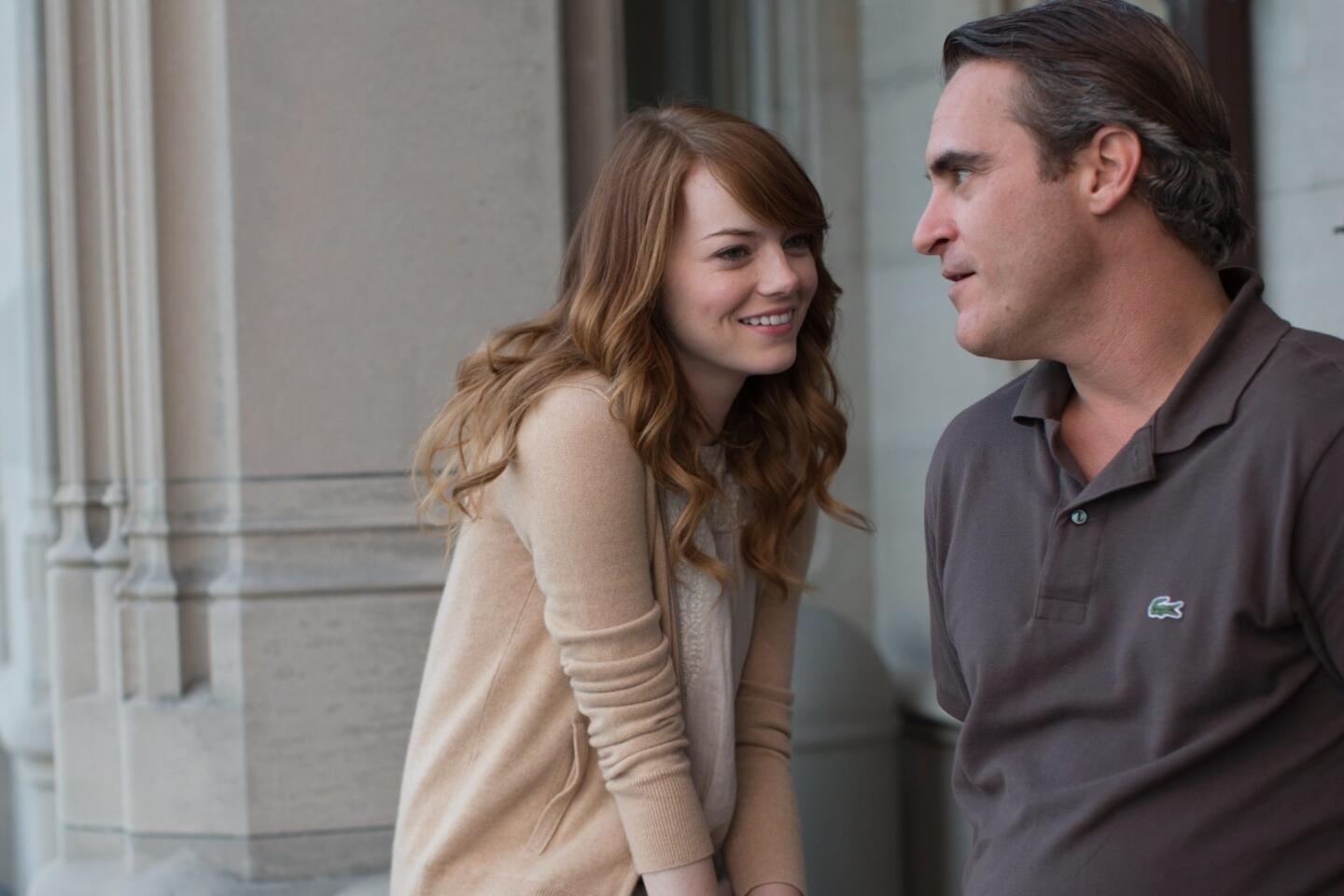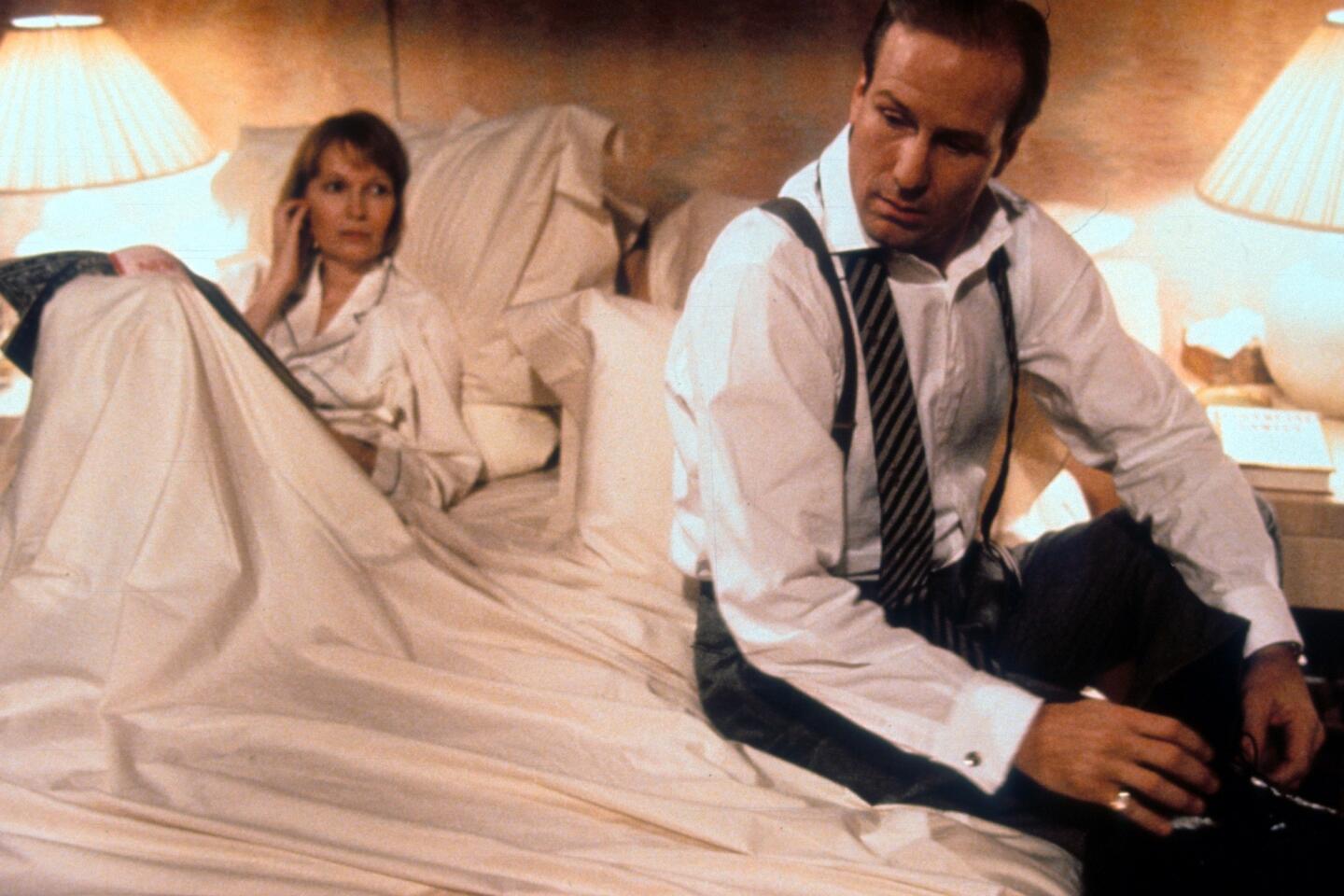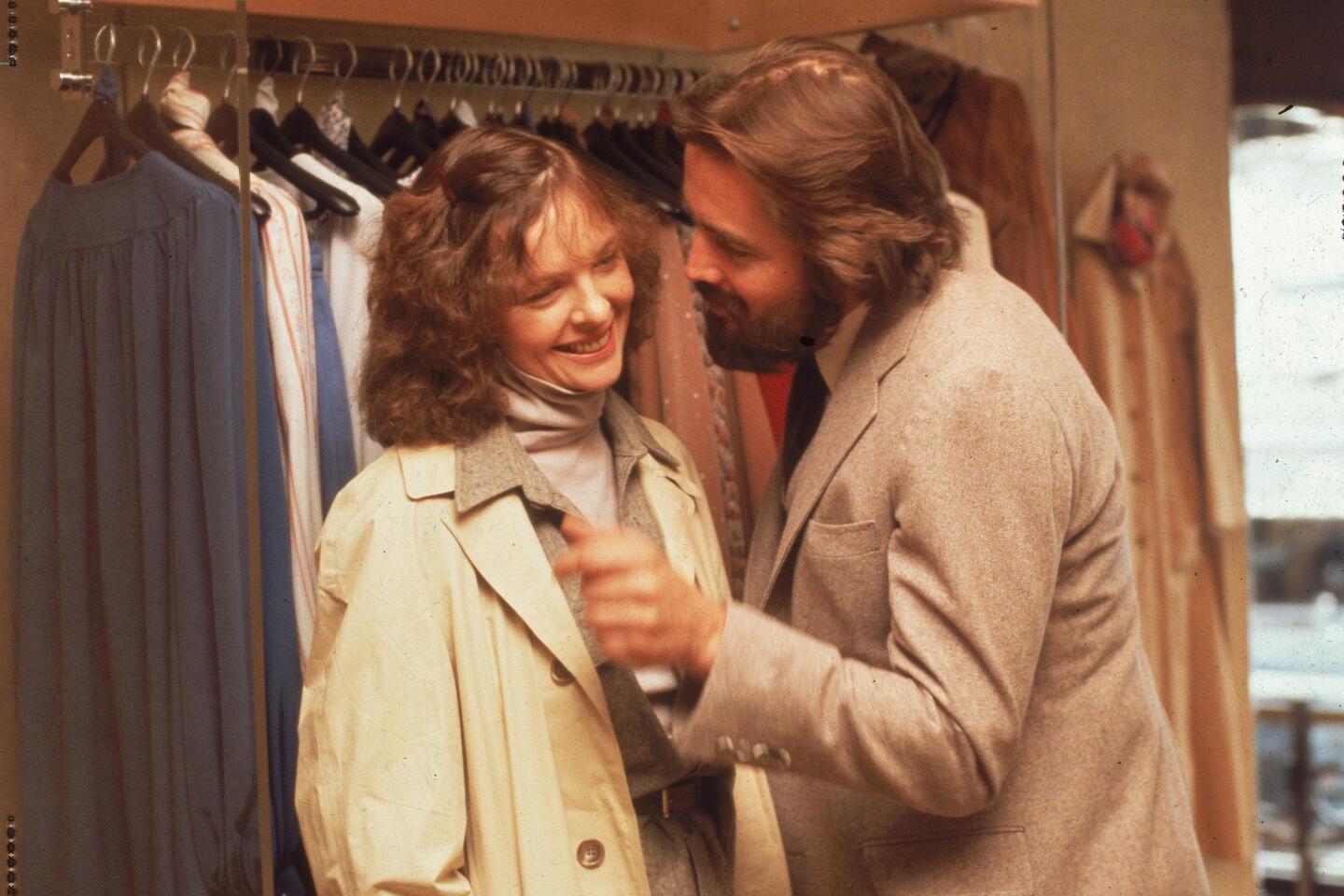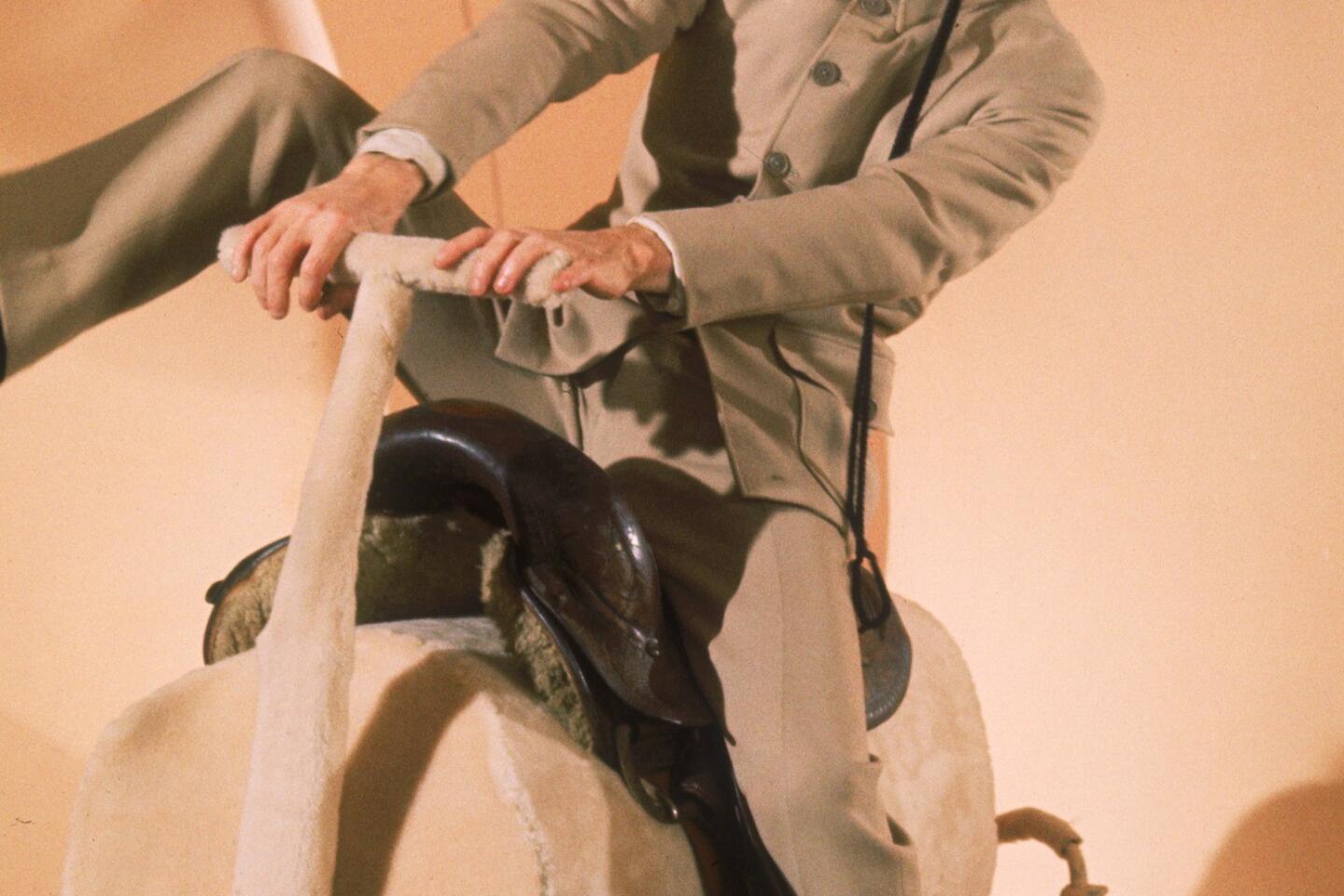Are older directors still making vital movies?
- Share via
Do movie directors, like fine wines, get better with age? That may sound like a frivolous question, but it has long been debated by critics as they weigh the relative merits of fiery young upstarts versus wise old veterans. The question takes on renewed relevance with the release of “Blue Jasmine,” the latest movie from 77-year-old writer-director Woody Allen.
Allen has received glowing reviews, but have the critics been overindulgent because of his age? In my view they have indeed overrated the picture, and its limitations may well have something to do with the sins of repetitiveness and enervation that sometimes afflict movie directors in their 70s and 80s.
The same questions could arise again during the next few months as other movies arrive from veteran directors. On the horizon we have “The Counselor” from 75-year-old Ridley Scott, “Venus in Fur” from Roman Polanski and “Capital” from Costa-Gavras, both 80; 83-year-old Clint Eastwood is preparing the movie version of the Broadway hit “Jersey Boys.” Add new films by Alain Resnais, 91, and Jean-Luc Godard — the enfant terrible is now 82 — and it seems that graybeards are having a heyday. The winner in the longevity sweepstakes is Portuguese director Manoel de Oliveira, who is reportedly in pre-production on a new movie at age 104. Regardless of the merits of this opus, one has to applaud his stamina as well as his optimism.
PHOTOS: The many movies of Woody Allen
In theory, there’s no reason why age should prevent any of these directors from working productively. Hollywood has always been notoriously ageist, and it’s heartening to see people with gray in their hair at work in this town. In the past, many gifted directors were forcibly retired far earlier than they should have been. A famous story is told of Fred Zinnemann (two-time Oscar winner), who “took a meeting” late in his career with a young studio executive who asked the aging director to recount his credits. “You first,” Zinnemann reportedly shot back.
Needless to say, people need not lose their creative vitality when they become eligible for Social Security. But some challenges face senior movie directors that may not apply to artists in other media. Novelists and painters often do some of their finest work in their twilight years. Then again, it’s a lot easier to stay in control of a paintbrush or a blank sheet of paper than it is to oversee the small armies and the distant locations that demand the attention of the film director.
Still, as people remain fitter and more vigorous in their later years, these physical obstacles may be less relevant than they once were. A more pertinent concern is the growing insularity of many rich directors. Sheltered by their wealth and by a coterie of sycophants, they’re often cut off from the urgent concerns of contemporary life, and they lose their creative edge. They tend to repeat themselves to diminishing effect.
Of course there are exceptions to this pattern — Robert Altman’s “Gosford Park” (made when the director was 76) or Sidney Lumet’s “Before the Devil Knows You’re Dead” (the work of an 83-year-old director) — but they are rare.
PHOTOS: Woody Allen’s leading ladies
The same issues were raised by two leading critics of the 1960s, Pauline Kael and Andrew Sarris. In his book “The American Cinema,” Sarris, who helped to popularize the auteur theory in America, championed the late films of directors including John Ford, Howard Hawks and Alfred Hitchcock. “The economy of expression that Ford has achieved in 50 years of filmmaking constitutes the beauty of his style,” Sarris wrote.
Kael cried humbug. In her famous denunciation of the auteur theory, “Circles and Squares,” she blasted many of the late movies that Sarris and his disciples revered. Throughout her career, she slammed many older directors’ films as creaky relics. In a review of Hawks’ 1967 western “El Dorado,” Kael wrote, “‘El Dorado’ combines [John] Wayne and [Robert] Mitchum, both looking exhausted. The director, Howard Hawks, is also tired, and like Ford, he doesn’t want to go out on location. … Their recent movies look as if they were made for television.”
Kael could miss the mark badly. She failed to appreciate Ford’s late masterpiece, “The Man Who Shot Liberty Valance.” And she tried to stay hip by sometimes overpraising the work of hot young directors like Martin Scorsese, Brian De Palma and Steven Spielberg. But she was refreshingly unsentimental about old age, refusing to give directors a pat on the head simply because they kept working. “Repetition without development is decline,” she declared bluntly.
That criticism unfortunately applies to many of Woody Allen’s recent movies. The prolific Allen has succumbed to the repetitiveness that Kael identified as one of the greatest hazards for an aging director. Many of his protagonists — Kenneth Branagh in “Celebrity,” Jason Biggs in “Anything Else,” Owen Wilson in “Midnight in Paris” — sound like younger versions of Allen himself, with the same whiny, intonations.
PHOTOS: Woody Allen’s highest grossing films
More disturbing is that Allen has failed to sustain the incisive observation of contemporary mores that distinguished his best films. In “Blue Jasmine,” the scenes set in the affluent circles of Manhattan and the Hamptons are stale. All the satirical jabs at upper-class excess seem like milder, less funny variations on jokes that Allen has deployed since “Annie Hall.”
The minute you see Alec Baldwin’s character, you know that this financial wizard is a cheat and a philanderer, and he never reveals any other dimensions. Compare Baldwin’s character to the equally slick but more sharply drawn TV producer played brilliantly by Alan Alda in 1989’s “Crimes and Misdemeanors,” and you’ll see how Allen’s writing has declined in the last two decades.
Scenes in San Francisco, where Cate Blanchett’s Jasmine is forced to relocate after she loses her riches, are somewhat more novel within the Allen oeuvre, but most of the working-class characters also seem stock, enlivened only by the acting skills of Bobby Cannavale and a surprisingly adroit Andrew Dice Clay. All of the performances in the movie deserve the praise they’ve received. Blanchett in particular takes us inside the disturbed mind of this alternately fragile and steely wreck, but the writing lacks the acuity found in “Manhattan,” “Hannah and Her Sisters,” “Crimes and Misdemeanors” or “Husbands and Wives” — four more probing dissections of modern relationships.
This same slackening of energy and insight undermined the contemporary scenes of “Midnight in Paris.” There was genuine cleverness in the period scenes that saw Wilson’s character transported to the literary salons of the 1920s, but the present-day scenes with Wilson, his fiancée and her pretentious parents were flaccid and trite.
PHOTOS: ‘Blue Jasmine’ and ‘Elysium’: Inequality at the movies
In my view, “Match Point” remains Allen’s best film of the last decade because it is the one in which he challenged himself by tackling a whole new genre — a film noir thriller, bolstered by pungent scrutiny of a social climber in London. A willingness to take risks is one key element that distinguishes a vibrant work by any director from a paint-by-numbers retread.
That helps to explain why Eastwood turned out a remarkable series of films in his 70s. He moved outside his comfort zone by focusing on a female protagonist in “Million Dollar Baby,” imagined the Second World War from the Japanese point of view in the extraordinary “Letters from Iwo Jima” and dared to play an unrepentant racist in the politically incorrect but vital “Gran Torino.” (However, it must be noted that even Eastwood has lost some of his edge in more recent films.)
These mixed results should raise warning bells as we await the next batch of films from the septuagenarian and octogenarian crowd. It’s wise to approach these films with a measure of hope, balanced by a regretful dose of skepticism.
Farber is a film critic and historian and president of the Los Angeles Film Critics Assn.
More to Read
Only good movies
Get the Indie Focus newsletter, Mark Olsen's weekly guide to the world of cinema.
You may occasionally receive promotional content from the Los Angeles Times.


















